Contents
Responses, Reflexes & Muscles
Responses & Reflexes
A stimulus is a detectable change in the environment. These changes can be detected by cells called receptors. This triggers a response through the flow chart shown below. The effector is the name given to the structures that cause the response, which can be muscles or glands.
Stimulus -> Receptor -> Coordinator -> Effector -> Response
Organisms increase their chance of survival by responding to stimuli through different response mechanisms.
Response in Flower Plants
Tropism is the term given to when plants respond, via growth, to stimuli. Tropisms can be positive or negative, growing towards or away from a stimulus. Plants respond to light, gravity, and water.

Tropisms are controlled by specific growth factors, and one key example is indoleacetic acid (IAA). IAA is a type of auxin and can control cell elongation.
Phototropisms
Shoots
Shoots need light for photosynthesis, which is why plants grow and then bend towards light. This is controlled by IAA. This is positive phototropism.
Shoot tip cells produce IAA, which causes cell elongation in shoots, and this diffuses to other cells. If there is unilateral light, the IAA will diffuse towards the shaded side of the shoot, resulting in a higher concentration of IAA there. The IAA causes the cells on the shaded side to elongate more, and this causes the plant to bend towards the light source.
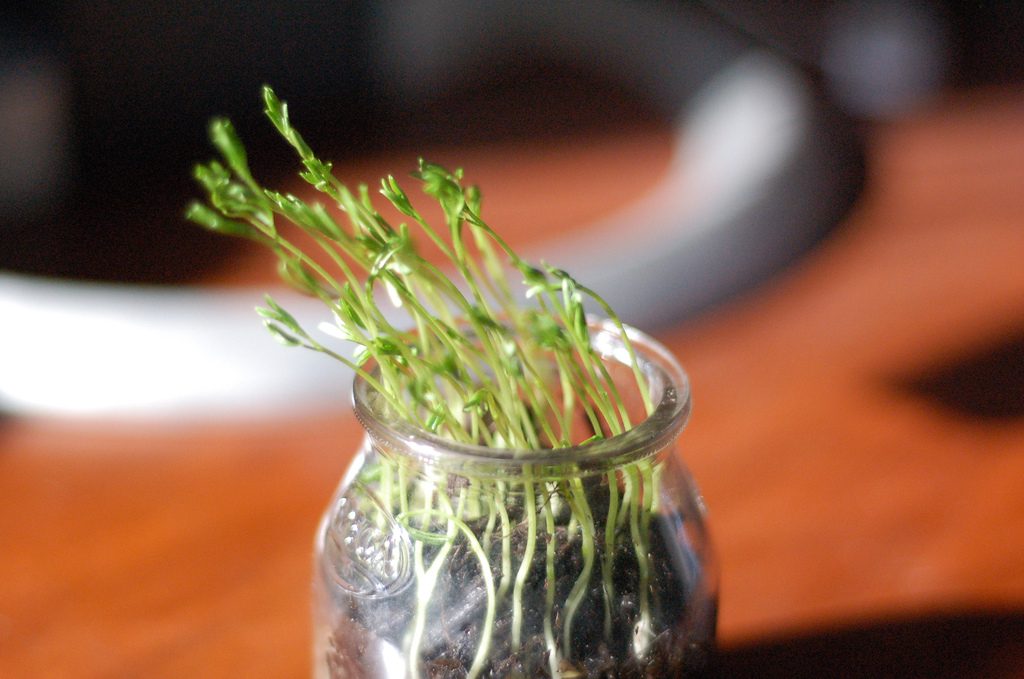
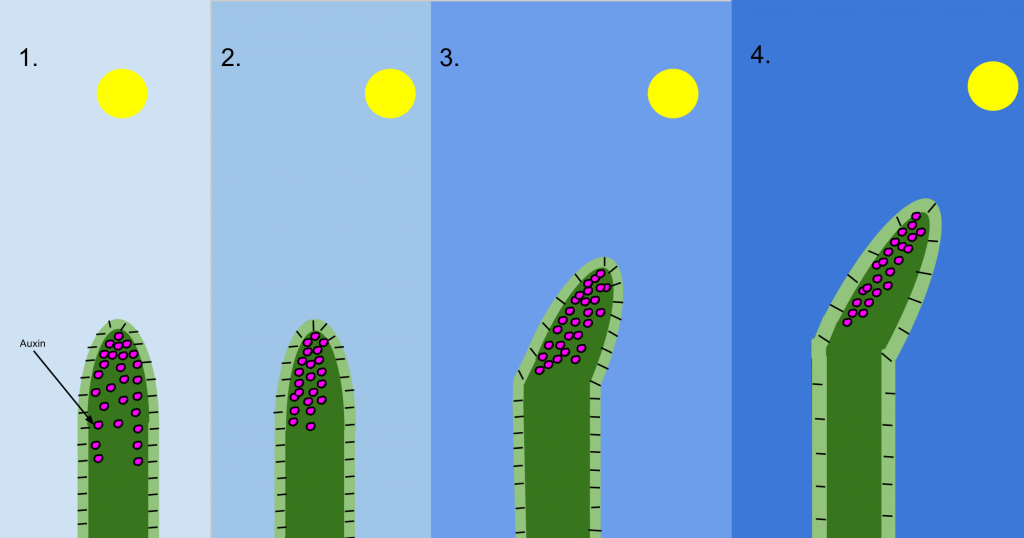
Roots
Roots do not photosynthesize and do not require light. They are more able to anchor the plant if they are deep in the soil away from light. In roots, a high concentration of IAA inhibits cell elongation, causing root cells to elongate more on the lighter side. As a result, the root bends away from light. This is negative phototropism.
Gravitoprism
Shoots
IAA will move from the upper side to the lower side of a shoot. If a plant is vertical, this causes the plant cells to elongate and the plant grows upwards. If a plant is on its side, it will cause the shoot to bend upwards. This is negative gravitropism.

Roots
IAA moves to the lower side of roots so that the upper side elongates and the root bends down towards gravity and anchors the plant. This is positive gravitropism.
Taxes
This is a simple response in which an organism will move its entire body towards a favorable stimulus or away from an unfavorable stimulus. When organisms move towards a stimulus, this is known as positive taxis, and when an organism moves away, it is described as negative taxis.
Earthworms will show negative phototaxis, meaning they move away from light. They will move towards dark environments, such as in the soil, to help them avoid dehydration, predators, and to locate food. Bacteria can show positive chemotaxis, as they move towards certain chemicals to aid survival.

Kinesis
This is when an organism changes the speed of movement and the rate it changes direction. If an organism moves from an area where there are beneficial stimuli to an area with harmful stimuli, its kinesis response will be to increase the rate it changes direction to return to the favorable conditions quickly. If an organism is surrounded by negative stimuli, the rate of turning decreases to keep it moving in a relatively straight line to increase the chances of it finding a new location with favorable conditions.
Woodlice respond to water, as they must be in damp areas to prevent excessive water loss across their surface. If a woodlouse crosses a border from a damp to a dry area, the kinesis response would be to turn rapidly to increase the probability that it will end up back in the damp area. If the woodlouse is in a completely dry area, the turning rate would decrease so that it would move in a straight line to increase the chances of finding a new damp area.

Simple Reflex
In mammals, the simplest response to a stimulus is a reflex. This is a rapid, involuntary response to danger that bypasses the brain. It is rapid because it only involves three neurons and therefore has few synapses. Synapses slow down responses as electrical energy is converted to chemicals that diffuse across the synapse. Because no decision is involved, the response is also rapid and prevents the brain from being overloaded with situations to decide responses to.
Once the stimulus is detected by the receptor, an impulse is passed along the sensory neuron to a relay neuron, located in the spine. The relay neuron passes the impulse onto a motor neuron, which is connected to an effector. For example, if the stimulus is a hot object, the effector would be the muscles in your hand and arm, and the response would be that they contract to move your hand away from the dangerous hot object.
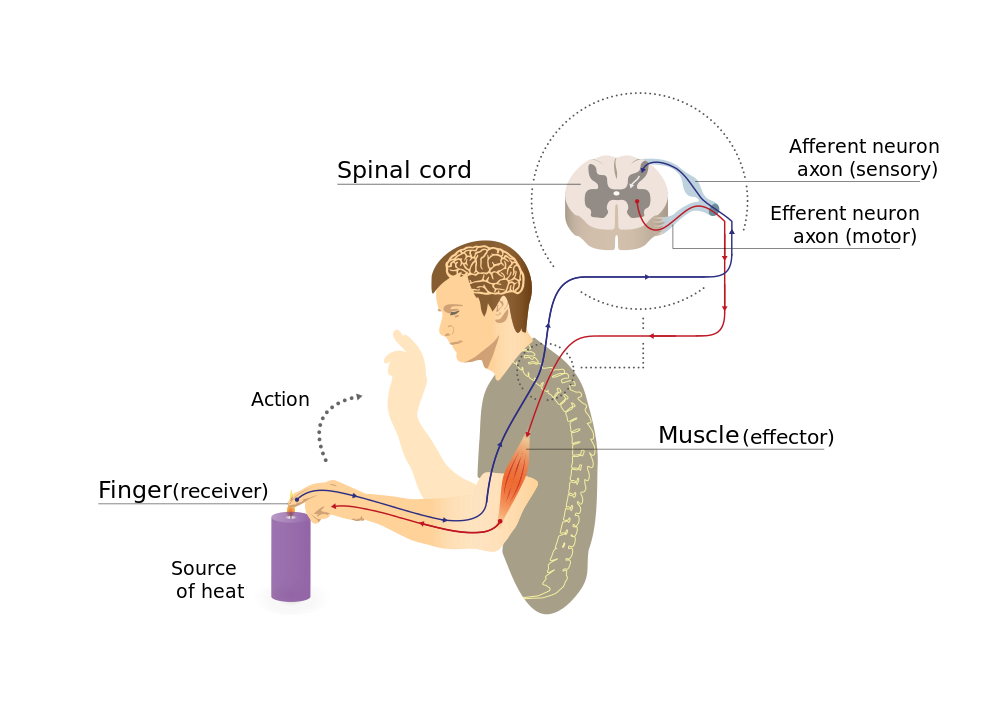
Muscles
Muscles act in antagonistic pairs against an incompressible skeleton to create movement. This can be automatic as part of a reflex response or controlled by conscious thought. Below is the ultrastructure of a myofibril:
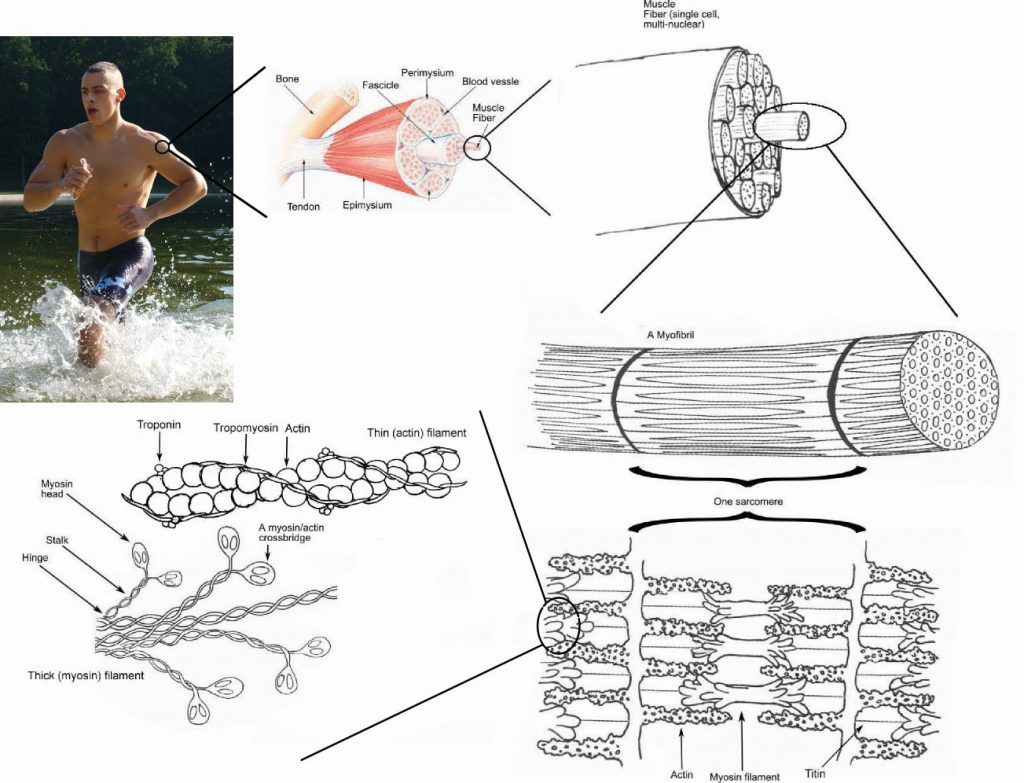
Muscle fibers are made up of millions of myofibrils, which collectively bring about the force to cause movement. Myofibrils are made up of fused cells that share nuclei and cytoplasm, known as sarcoplasm, and there is a high number of mitochondria. Myofibrils are made up of two key types of protein, myosin and actin, that form a sarcomere.
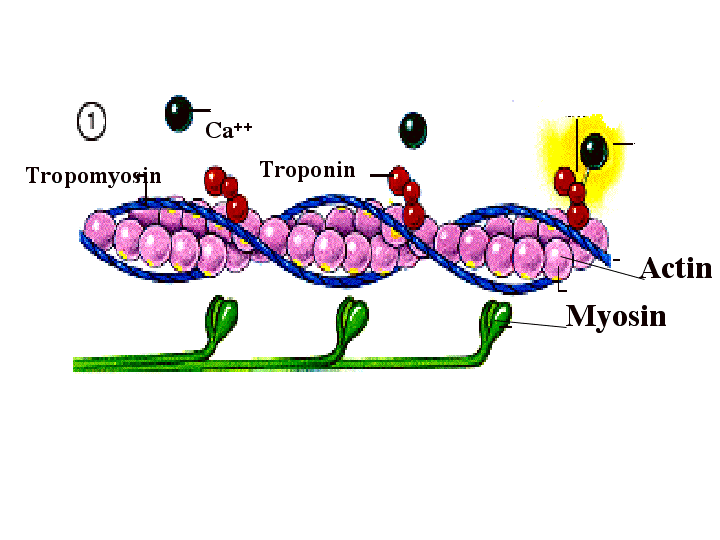
Sliding Filament Theory
When an action potential reaches a muscle, it stimulates a response. Calcium ions enter and cause the protein tropomyosin, which blocks binding sites for the myosin head of the actin, to move and uncover the binding sites. While ADP is attached to the myosin head, it can bind to the binding site on the actin to form a cross-bridge. The angle created in this cross-bridge creates tension, and as a result, the actin filament is pulled and slides along the myosin. In doing so, the ADP molecule is released. An ATP molecule can then bind to the myosin head and causes it to change shape slightly, resulting in it detaching from the actin. Within the sarcoplasm, there is the enzyme ATPase, which is activated by the calcium ions, to hydrolyze the ATP on the myosin head into ADP and releases enough energy for the myosin head to return to its original position. This entire process repeats continually while the calcium ions remain high, and therefore while the muscle remains stimulated by the nervous system.
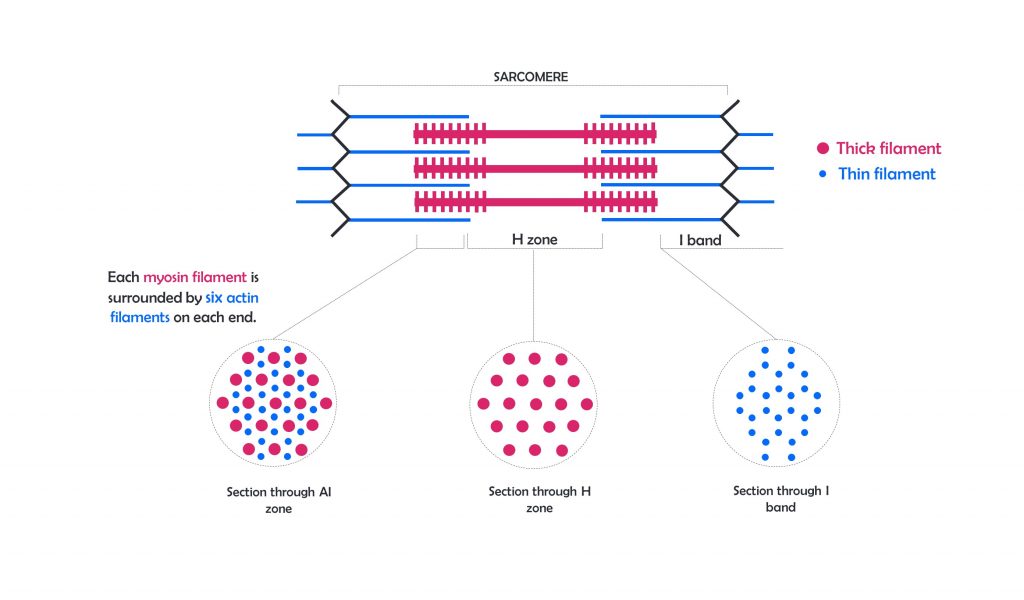

Active muscles, therefore, require a high concentration of ATP. In times when aerobic respiration cannot create enough ATP to meet this demand, anaerobic respiration occurs. The chemical phosphocreatine, which is stored in muscles, assists this by providing phosphate to regenerate ATP from ADP.
Slow & Fast Skeletal Muscle Fibers
| Slow-twitch fibers | Fast-twitch fibers | |
| Structure | Contains a large store of myoglobin, a rich blood supply, and many mitochondria. | Thicker and more myosin filaments, a large store of glycogen, a store of phosphocreatine to help make ATP from ADP, and a high concentration of enzymes involved in anaerobic respiration. |
| Location | Calf muscles | Biceps |
| General properties | Contract slower and can respire aerobically for longer periods of time due to the rich blood supply and myoglobin oxygen store. These muscles are adapted for endurance work, like marathons. | Contract faster to provide short bursts of powerful contraction. These are adapted for intense exercise, such as sprinting or weight-lifting. |
- What is the main growth factor in plants?
- IAA
- What is the name for the type of response when organisms move in one direction towards or away from a stimulus?
- taxis
- What is the name of the response when an organism's rate and direction of movement changes in response to a stimulus?
- kinesis
- What are the names of the two key proteins that make up muscle fibers?
- Your answer should include: Actin / myosin
- Which ions are released into the sarcomere in response to an action potential?
- Your answer should include: calcium / ions
- Which part of a simple reflex detects a stimulus?
- receptor
